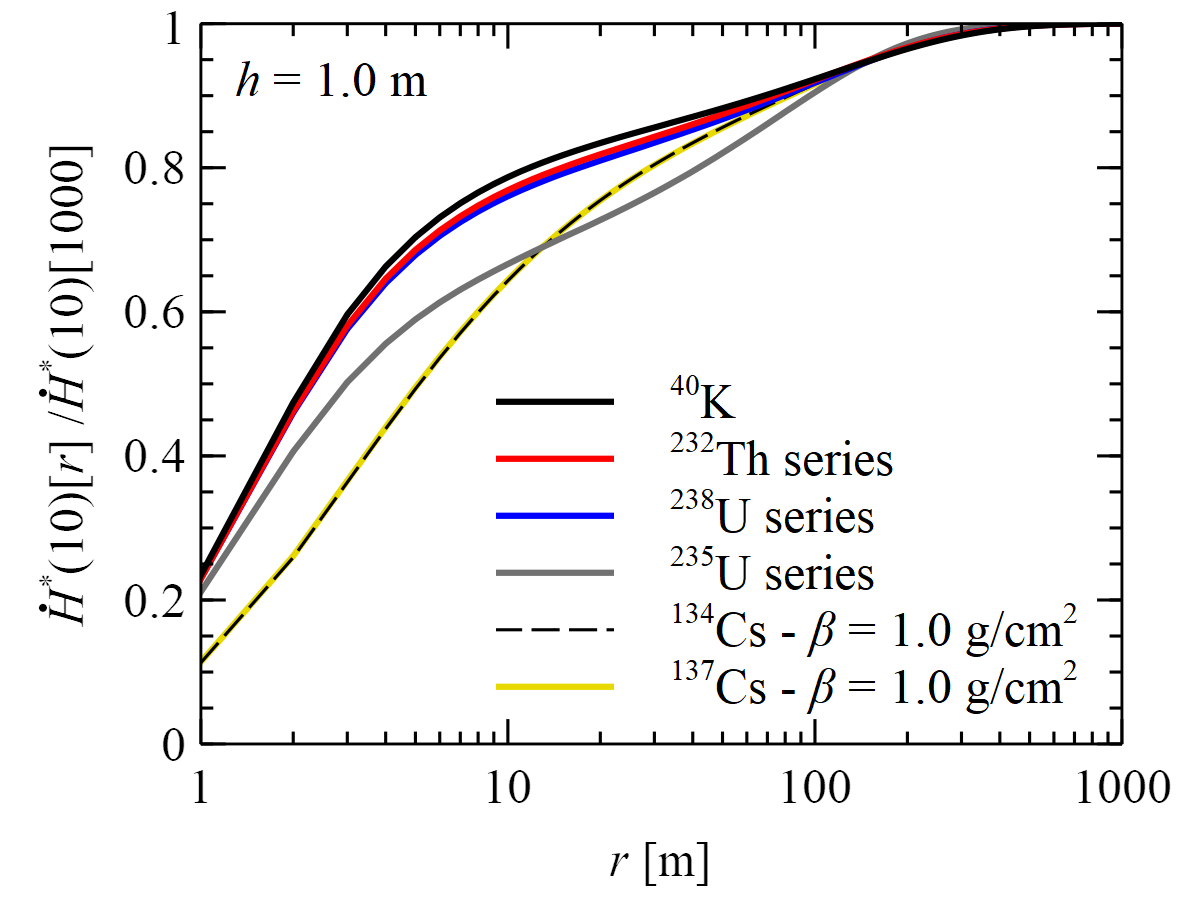Fields of View for Environmental Radioactivity
Published:

Abstract
The gamma component of air radiation dose rates is a function of the amount and spread of radioactive nuclides in the environment. These radionuclides can be natural or anthropogenic in origin. The field of view describes the area of radionuclides on, or below, the ground that is responsible for determining the air dose rate, and hence correspondingly the external radiation exposure. This work describes Monte Carlo radiation transport calculations for the field of view under a variety of situations. Presented first are results for natural 40K and thorium and uranium series radionuclides distributed homogeneously within the ground. Results are then described for atmospheric radioactive caesium fallout, such as from the Fukushima Daiichi Nuclear Power Plant accident. Various stages of fallout evolution are considered through the depth distribution of 134Cs and 137Cs in soil. The fields of view for the natural radionuclides and radiocaesium are different. This can affect the responses of radiation monitors to these nuclides if the detector is partially shielded from the ground within its field of view. The field of view also sets the maximum reduction in air dose rates that can be achieved through local decontamination or remediation measures. This maximum efficiency can be determined quickly from the data presented here for the air dose rate versus the spatial extent of radioactive source on the ground.
A. Malins, M. Okumura, M. Machida, H. Takemiya & K. Saito
Proceedings of 2015 International Symposium on Radiological Issues for Fukushima’s Revitalized Future
30-31 May 2015, Paruse Iizaka, Fukushima, Japan
PDF: download
ArXiv: https://arxiv.org/abs/1509.09125
